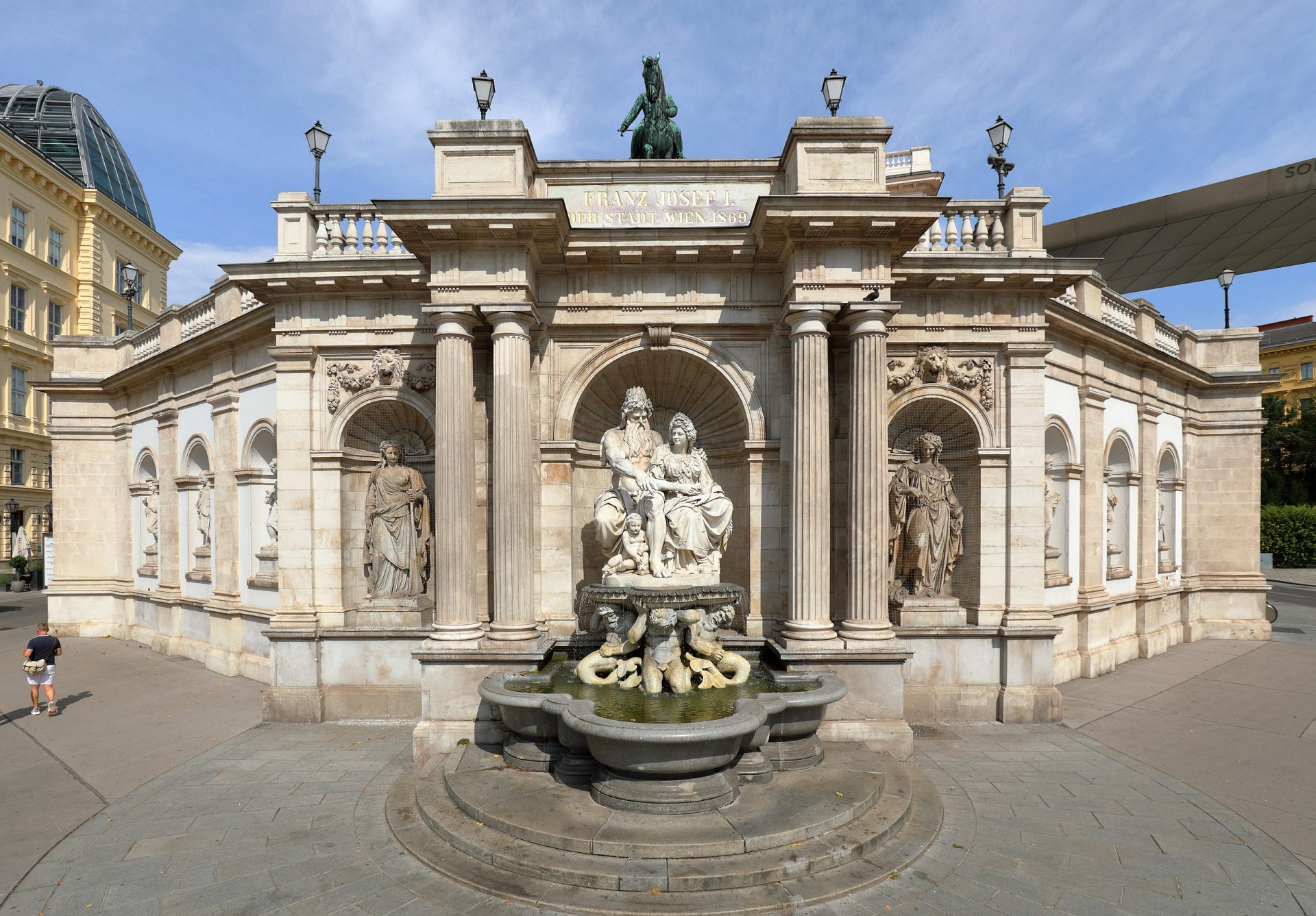Experience Travel Insights
Discover Vienna’s True Lifeline: A Water Tour in Vienna Beyond the Guidebooks
by Long Lin-Maurer • July 22, 2025

Vienna’s Liquid Soul: A Water Tour in Vienna Along its Lifeline
To understand Vienna, one might first look to its imperial palaces or its opulent opera house. But to truly comprehend its resilience and its celebrated quality of life, one must look to a quieter element: its water. This Vienna’s liquid history tour is not about the usual landmarks. It is a journey along the invisible thread that stitches together the city’s narrative, a flowing chronicle from Roman settlement to modern metropolis. This is not a typical sightseeing trip, but a deeper immersion into the city’s circulatory system.
This Vienna water excursion is an exploration of the liquid soul that has shaped Vienna’s destiny, a story best told not in a museum, but by exploring Vienna’s waterways—from ancient channels buried beneath cobbled streets to the triumphant fountains that celebrate its purity.
Come and experience travel!
Personally designed, seamlessly delivered – your journey, our expertise!
We are a boutique travel agency and consultancy specializing in Hub & Spoke Tours across Central Europe, the Benelux and the Dolomites.
The Roman Pulse: Vindobona’s First Veins
Our story begins in the Roman military camp of Vindobona. Long before the Habsburgs, the Romans laid the city’s foundational infrastructure. The Danube was a formidable frontier, but for daily life, a more controlled water source was essential.
To walk through the Michaelerplatz today is to stand directly above these Roman beginnings. Excavations here have revealed remnants of Roman dwellings and their sophisticated water management systems. The Romans constructed the first Roman aqueducts in Vienna, channeling fresh water into the settlement and an intricate network of sewers to carry waste away. This was a matter of military and civic survival. A healthy legion was an effective one, and clean water was the first line of defense against disease.
These subterranean Roman channels are Vienna’s earliest arteries. While largely invisible, their legacy is profound. They established a precedent of engineering for the public good that would echo through the centuries, a principle embedded in its very bedrock for two millennia.
The Medieval Wellspring: Life and Peril by the Danube River
As the Roman Empire faded, Vienna’s relationship with water became more intimate. The city huddled behind its walls, its lifeline a complex network of wells. The mighty Danube river, a source of commerce, was also an unpredictable neighbor, and its frequent floods shaped the city’s landscape.
The channel known today as the Donaukanal is not a modern canal but a historic arm of the Danube. In the medieval period, it was the city’s primary artery for trade. Yet, the water that sustained the city was also a source of peril. Wells could become contaminated, leading to outbreaks of dysentery and typhoid.
This era is memorialized in the city’s folklore. The story of the Basilisk in the Schönlaterngasse, a mythical creature said to have poisoned a well, is a folkloric echo of the very real fear of waterborne illness. This period reveals a Vienna defined by a precarious relationship with water—a constant negotiation between its life-giving properties and its destructive potential.
Come and experience travel!
We design bespoke travel experiences with a perfect balance of cultural depth, efficiency and comfort.
Specializing in seamless hub-and-spoke journeys, we create well-paced, immersive itineraries tailored to your interests.
Habsburg Splendor: A Tour of Vienna’s Fountains
With the rise of the Habsburg dynasty, water was re-imagined as a medium for art and a symbol of imperial power. Controlling and displaying water was a potent statement of wealth and dominion over nature.
This is the era of the grand Vienna fountains. In the heart of the city, on the Neuer Markt, the Donnerbrunnen (Providentia Fountain) is a complex allegorical statement about enlightened rule. It is a hydraulic map of Habsburg power, rendered in lead and bronze. Similarly, the magnificent Pallas-Athene-Brunnen in front of the Austrian Parliament building continues this tradition, with figures representing the major rivers of the Austro-Hungarian Empire. A Vienna river and fountain tour is incomplete without seeing these masterpieces.
To experience these fountains is to witness the apotheosis of water as spectacle. They transformed a basic human need into a breathtaking artistic and political statement, forever embedding the image of flowing, abundant water into the visual identity of imperial Vienna.
The Great Thirst: A Nineteenth-Century Revolution
Despite its splendid fountains, 19th-century Vienna faced a catastrophic Vienna public health crisis. The Industrial Revolution had caused the city’s population to explode, and the groundwater was dangerously contaminated. Devastating cholera and typhoid epidemics swept through the city.
The answer came from a geologist: Eduard Suess. He proposed a monumental undertaking: the construction of a 120-kilometer aqueduct to bring pure, alpine spring water to Vienna. This was the Erste Hochquellenwasserleitung (First Vienna Mountain Spring Pipeline), an engineering marvel and a landmark achievement. It was a declaration that access to clean water was a fundamental human right.
The aqueduct was inaugurated on October 24, 1873. To commemorate the event, a spectacular fountain was commissioned: the Hochstrahlbrunnen at Schwarzenbergplatz. Its powerful central jet symbolized the purity of the new water source. It was, and remains, a monument to the moment Vienna secured its future health. This single project arguably did more to shape modern Vienna than any palace and is a highlight of any hydro-tour in Vienna.
Come and experience travel!
Our expertise lies in uncovering authentic stories, hidden corners, and behind-the-scenes experiences that bring destinations to life.
We design customized mindful travel experiences that seamlessly integrate mindful eating and mindful indulgence. These experiences foster self-care and create transformational journeys that nurture mental well-being, promote sustainable travel, and strengthen family connections.
Tasting the Alps: The Art and Science of Viennese Drinking Water
The legacy of the pipeline is a daily, sensory experience. But what makes this Viennese drinking water so exceptional? The answer lies in the journey of the alpine spring water.
As certified water sommeliers know, water has a distinct character. The water that flows to Vienna begins as rain and snowmelt in the Northern Calcareous Alps. It then slowly percolates through layers of limestone, a natural filtration process that enriches it with minerals. It arrives in Vienna in its natural, untreated state—a rarity for a city of this size.
To taste Viennese water is to appreciate this journey. It possesses a wonderfully balanced, crisp, and clean palate. This gift of alpine water is celebrated democratically throughout the city via more than a thousand public drinking fountains, or Trinkbrunnen. These fountains are an integral part of the urban fabric and a key stop in this aquatic exploration.
The Modern Artery: A Danube Tour in Vienna and the Donauinsel
The story did not end there. The old nemesis, the Danube river, still posed a flood threat. The final chapter is a masterpiece of 20th-century engineering: the Donauinsel (Danube Island).
Constructed between 1972 and 1988, the Donauinsel is a 21-kilometer-long artificial island. A Danube tour in Vienna today is defined by this landmark. Its primary function is a sophisticated flood control system, sitting between the main Danube and a relief channel, the Neue Donau.
Yet, its brilliance lies in its secondary function. The Donauinsel is also Vienna’s most beloved recreational area—a green lung offering beaches, cycling paths, and nature reserves. It transformed Vienna’s relationship with the river from one of fear to one of enjoyment, representing the city’s modern identity: innovative, green, and focused on well-being.
An Immersive Journey: Your Guided Water Walk in Vienna
To truly connect with Vienna, one must follow this liquid narrative. A complete water tour in Vienna is not a conventional tour. It would involve tracing the path of the first aqueduct and standing at the Hochstrahlbrunnen not just to take a photo, but to understand its symbolism. It would involve a guided tasting, a highlight of this Vienna’s water-themed journey.
This guided water walk in Vienna means seeing the Donauinsel not just as a park, but as a monumental testament to foresight. It is about connecting the dots—recognizing how the fear of a contaminated medieval well is linked to the triumph of the alpine aqueduct, and how a Habsburg fountain is part of the same story as a modern drinking fountain.
By exploring Vienna’s waterways, the city reveals itself in a new light. A simple glass of tap water becomes a taste of history, geology, and civic pride. This Vienna water excursion reveals a city whose greatest luxury is not its imperial gold, but its pure, life-giving water—the focus of this Vienna aquatic exploration and the hidden lifeline that continues to shape its soul.
Exploring Vienna’s Water Heritage
- Vienna’s High-Spring Water Pipelines: A History of Pristine Drinking Water
Explore the historical development and significance of Vienna’s renowned high-spring water aqueducts. - The Danube and its Regulation: Shaping Vienna’s Landscape
Learn about the historical efforts to regulate the Danube River and its profound impact on the city’s development and flood protection. - The Donaukanal: From River Arm to Urban Waterway
Discover the history and transformation of the Danube Canal, a vital part of Vienna’s urban fabric and a popular recreational area. - The Danube Island: A Modern Wonder of Flood Protection and Recreation
Understand the creation and multi-faceted role of the Danube Island, a key element in Vienna’s flood defense and leisure activities. - The Old Danube: A Relict River Arm and Popular Lakeside Retreat
Uncover the history of the Alte Donau, a former arm of the Danube, now serving as a beloved recreational lake. - Public Fountains of Vienna: Art, History, and Refreshment
Explore the rich history and artistic significance of Vienna’s public drinking fountains, providing fresh high-spring water. - The Wien River Regulation: Taming the City’s Hidden Stream
Delve into the historical engineering efforts to regulate the Wien River, a crucial project for urban development and flood control. - Vienna’s Sewer System: A Pioneer in Urban Sanitation
Learn about the historical evolution of Vienna’s advanced sewer system, a testament to its early commitment to public health. - Historical Public Baths in Vienna: From Roman Origins to Modern Spas
Trace the long and varied history of public bathing culture and facilities in Vienna, reflecting societal changes and health practices. - “The Blue Danube” Waltz: Vienna’s Iconic Ode to its River
Discover the historical context and cultural significance of Johann Strauss II’s famous waltz, embodying Vienna’s connection to the Danube.
